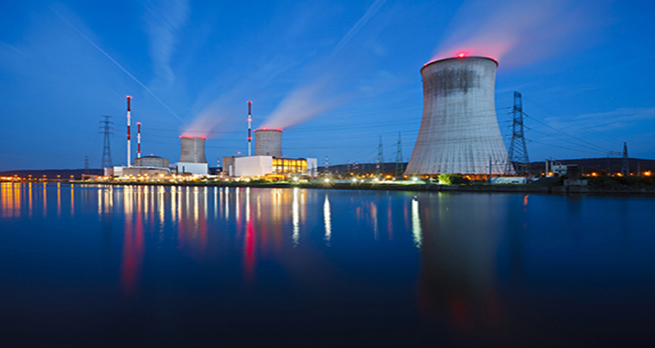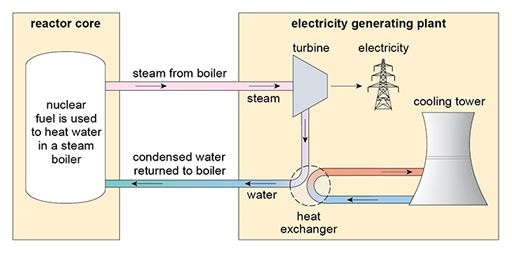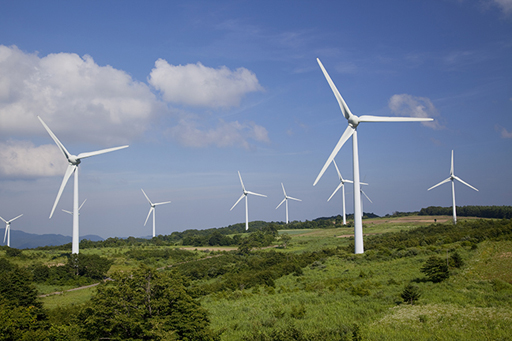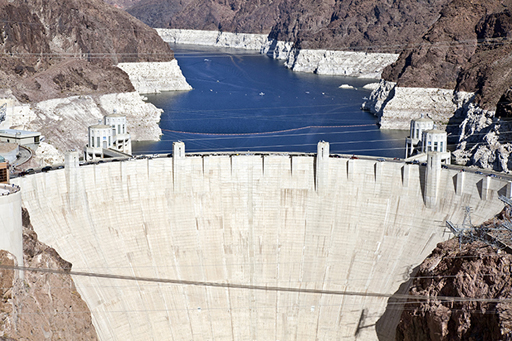2.1.4 Energy sources
Power stations use different resources to produce energy. Each method has environmental and technical issues associated with its use.
Some sources of energy, such as nuclear and fossil fuels, are finite and will run out at some point in the future. The finite nature of fossil fuels in particular will be examined further in Week 4. Other sources are renewable and are naturally replenished on a small enough timescale to be useful to us. These sources include solar, wind, hydroelectric and geothermal. You’ll consider both types of energy source below.
Fossil fuels
The majority of the power stations in the UK use fossil fuels. They create steam from the heat produced from burning coal or gas.
The remains of living organisms, plants and animals, buried and compressed over millions of years, have formed the fossil fuels, coal, oil and natural gas. Plants absorb solar radiation and use it in a process called photosynthesis to produce new plant material.
The issues associated with the burning of fossil fuels will be discussed further in Week 4.
Nuclear
The fission of uranium or other heavy elements produces a great deal more energy than fossil fuels but needs additional safeguards. However, the basic structure of the power stations is very similar. The use of fission will be discussed more fully later this week. A schematic diagram of a nuclear power station is shown in Figure 4.
Biofuel
Organic materials, collectively called biofuel, can be used to generate electricity. Biofuel can be obtained directly from plant material, such as peat and wood, or indirectly from agricultural, commercial, domestic and industrial waste.
It can be burned directly, in the same way as fossil fuels in a power station, or used to produce gas (biogas) that can then be burned. It is generally used in vehicles and not in power stations.
There are problems surrounding the technology, economics and the environmental impact of biofuel. Nonetheless, the constructive use made of waste material makes this a worthwhile field to develop.
Wind power
The rotation of the blades in windmills harness kinetic energy from the wind and so wind farms are able to produce electrical energy. Clearly, the position of the windmills is an important consideration. They can be installed both onshore and offshore.
Single wind turbines generate in the order of 2.5 MW of electricity – enough to power the needs of over a thousand households. In 2015, it was the most productive of the UK’s renewable energy resources.
Hydroelectric and wave power
Most hydroelectric power comes from dammed water being allowed to fall and then turn a turbine. The falling water loses gravitational energy and this is converted to kinetic energy of the turbine. It is the most widely used form of renewable energy but the damming of rivers can have huge impact to those communities situated downstream.
There are plans to harness ocean wave power to generate electricity, but this is proving difficult to do on a commercial basis. Waves, of course, are also produced largely by wind. Tidal power can be obtained from barrages built across estuaries.
Solar energy
Solar energy is the ultimate source of nearly all the energy sources! Solar energy can be harnessed directly via the use of photovoltaic cells which produce electricity. There have been great advances in the efficiency of photovoltaic cells in recent years.
Solar energy can also be used to heat water directly, replacing the need for heating by gas or electricity derived from other sources.
Geothermal power
Another source of electricity is hydrothermal power, which usually depends on water being pumped down into the ground, heated by hot rocks deep below the surface and the steam produced is then used to run turbines.
In Iceland, the Svartsengi geothermal power station uses naturally occurring hot water (at about 90 °C), which gushes to the surface of the volcanically active island at a rate of over 400 litres per second. The steam from this hot water is used to run turbines. Access to geothermal energy is only possible in a tectonically favourable setting so not all countries can use this source of energy.
The job of those running the National Grid in the UK is to utilise these different energy sources to provide electrical power to all our homes and businesses.
In the next section you will find out about how the National Grid runs.



